What is the best food to feed a Labrador?

Many dog owners prefer dry pet foods to natural foods. This is explained not only by the fact that ready-made meals save time, but also by their balanced composition. Of course, we are talking about quality products. For a Labrador, indeed, such food can become the optimal diet, but for this you need to make a choice.
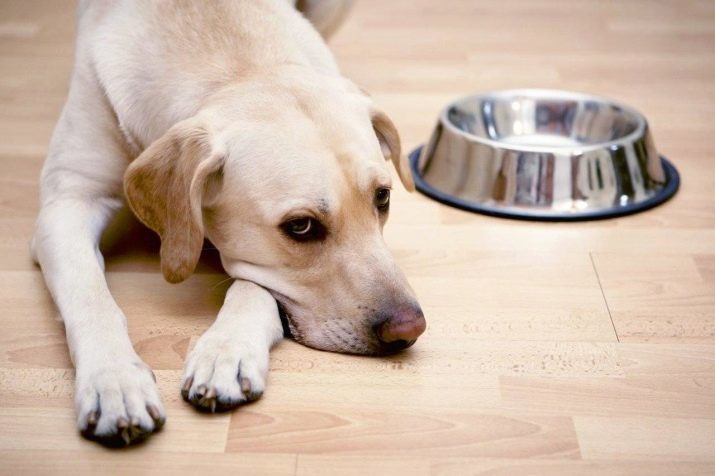
Types and composition of feed
Dry industrial labrador feeds are split into 4 main groups:
- traditional food for puppies, young and adult animals;
- medicinal formulations for health problems;
- food for pregnant and lactating dogs;
- products for the elderly.

For such a large dog as a Labrador, universal types of ready-made food are suitable, however, a high-quality dry breed food "Royal Canin" is desirable, to which a puppy can be transferred from 2 months.
This is important for the health of the animal for several reasons:
- dry croquettes contain prebiotics that normalize pet's digestion and stool;
- food contains unsaturated fatty acids, which improve the condition of the skin and coat;
- the shape of the granules is designed so that the puppy will chew them for a long time, while not swallowing air;
- the food is completely balanced, contains everything necessary for the full development of the dog, the good condition of its internal organs and bones.
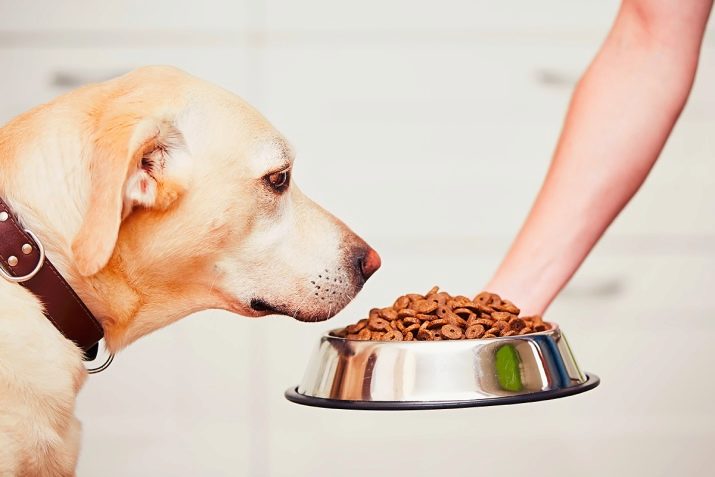
It should be said that only premium high-quality types of products from well-known manufacturers are suitable for young and adult Labradors, which, as a rule, include:
- dehydrated meat (chicken, beef, lamb);
- vegetable and animal fats;
- fish oil (fatty acids Omega 3, 6);
- hydralizate of cartilage;
- vegetable fiber;
- cereals, cereals, including rice;
- plant extracts as a source of gluten;
- glucosamine in the form of a hydrolyzate from crustacean shells;
- minerals, macro- and microelements, including iron, manganese, iodine, selenium;
- cholecalciferol and retinol (vitamins D3, A).
Food brands such as Royal Canin Labrador Retriever Adult, Advance Labrador Adult, ACANA or Hill's.
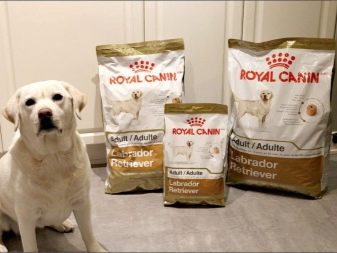
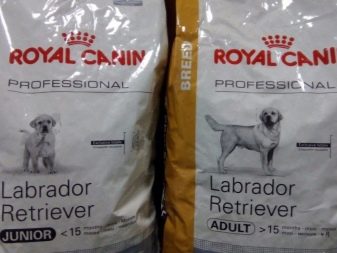
Manufacturers overview
When choosing food for your pet, you need to pay attention to the composition of the feed, the presence of useful ingredients in it, the high content of protein and minerals.
Only high-quality premium feed can meet the established requirements.
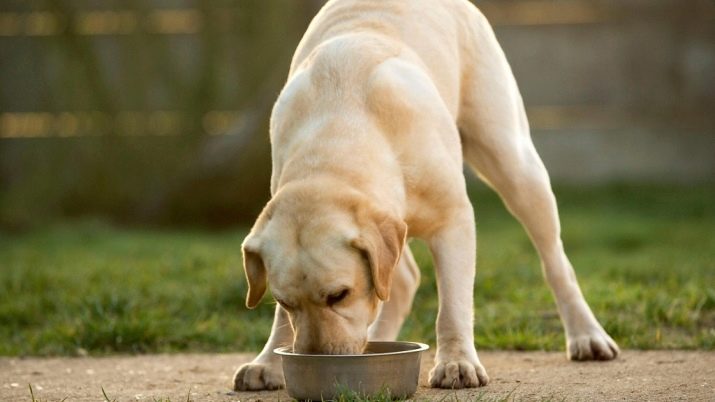
The list of the best dry food manufacturers, based on the reviews of the owners, includes several.
- Royal Canin for Labradors - this is a line of food for animals of different ages, as well as for sterilized individuals suffering from sensitive digestion, dogs with urolithiasis. The advantages of the brand are the presence in the composition of substances that protect the joints and bones of the pet, a varied menu and availability. Cons - the presence of antioxidants that can cause allergies and digestive problems.
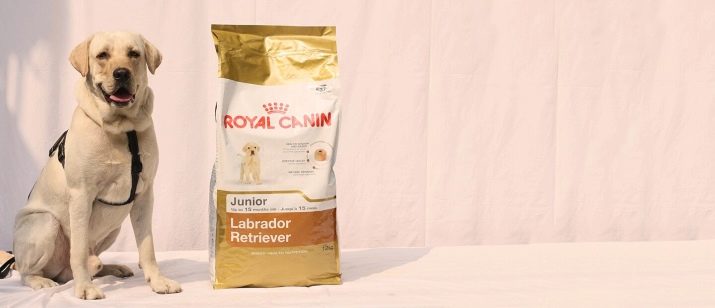
- Hill's Is a series of medicinal feeds, highly appreciated by veterinarians. The composition is enriched with a whole complex of vitamins, it always contains natural dehydrated meat, fatty amino acids, sodium and phosphorus, cereals. However, along with this, there are corn and wheat, which are capable of provoking allergic reactions.
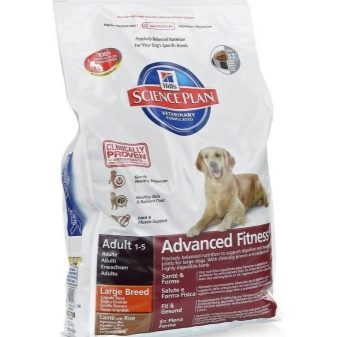
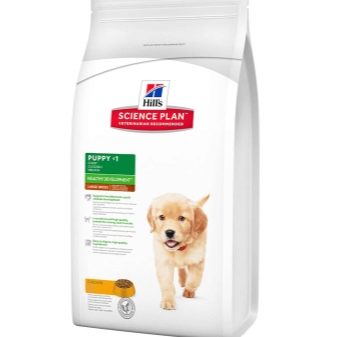
- Super premium food Nutra mix Is a completely natural food in the absence of any unwanted additives, including preservatives and food colors. Advantages - low calorie content, fast and easy digestibility. Among the disadvantages is the content of corn, wheat and gluten, which can negatively affect the digestion of the Labrador with its hypersensitivity.
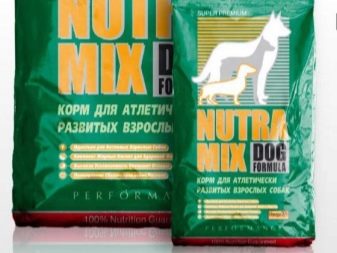
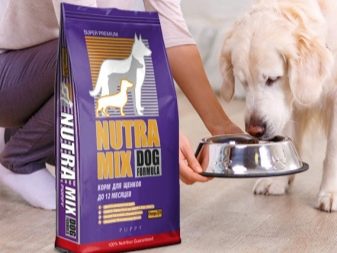
- Exclusive products from the manufacturer ACANA. The food is of high quality, high protein content, and has a prophylactic effect against various diseases of dogs. The high cost is recognized as the only drawback, but it is fully justified.
The conclusion is unambiguous: if the price for the owner is considered acceptable, then it is better to choose ACANA dry food.
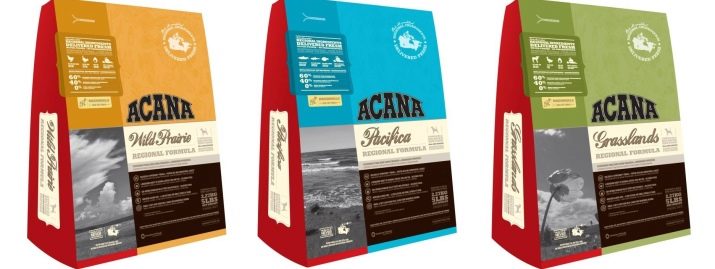
How to choose?
To make a choice in favor of this or that nutrition, it is necessary to build on the characteristics of the breed of the animal and other factors. Main criteria:
- compliance with the age of the dog;
- pet's taste preferences;
- suitable cost and availability for sale;
- no contraindications.

It should be borne in mind that, despite the strong physique and irrepressible energy that makes the Labrador extremely active and cheerful, the breed has hereditary characteristics, more precisely, a predisposition to the development of certain pathologies, and this fact forces you to select a special menu for your pet.
In the case of excess weight and even obesity due to a tendency to overeat, the pet needs therapeutic and prophylactic feeds to prevent the appearance of overweight, and medical nutrition. Among such products:
- Opti Life (12.5 kg) Degistion Adult Maxi & Medium, Advance Maxi Light Adul - diet food;
- Hil's Prescription Diet Canine Metabolic (+ mobility with Chicken dry) to improve metabolic processes;
- for weight control - Ontario Weight Control Large Turkey & Potatoes;
- for the prevention of excess weight and with a predisposition to allergies - hypoallergenic Royal Canin Maxi Light Weight Care.
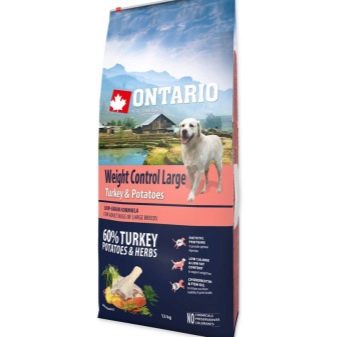
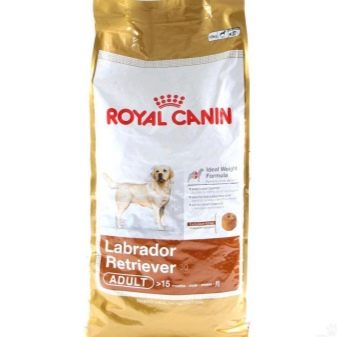
Digestive disorders in this breed of dogs are associated with the fact that they have an excellent appetite, and they are often indiscriminate in food.
Foods that will help to avoid disorders of the gastrointestinal tract - Happy Dog Diet (for treatment), Bosch Soft Maxi (for sensitive animals), Barking Heads Tender loving Care (dietetic food). In order to prevent joint diseases in a Labrador, veterinarians recommend products that include components such as chondroitin sulfate and glucosamine sulfate. In this case, feed is relevant. Hil's Prescription Diet J / D Canine Mobility dry, Royal Canin Maxi Joint Care.
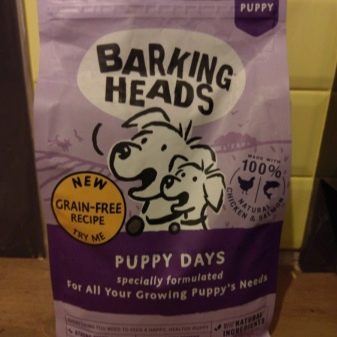
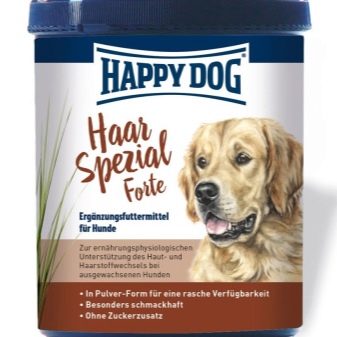
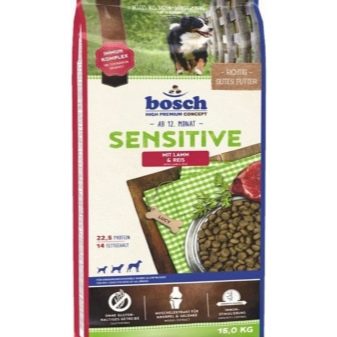
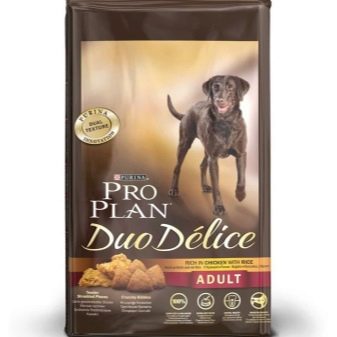
Feeding rates
It is necessary to feed labrador retriever puppies up to a year in accordance with a certain regimen and in a strictly established dosage.
It is important to respect the portion size so that the puppy does not overeat and at the same time does not feel hungry.
To avoid mistakes, you need to follow the instructions. How much food an animal needs is indicated on the food packaging:
- on average in 1-2 months a Labrador eats no more than 350 g per day;
- at three months - 400 g;
- at 5 months, all portions per day are 450-500 g (puppies are not fed at night).

Diet:
- at the age of 1–2 months, dogs are fed 5–6 times a day;
- at 3 months - 4 times, and at least 3 hours should pass between feedings so that the food has time to be digested;
- at 4 months, the dog has 3 meals;
- at 6 months, the pet begins to accustom to a two-time schedule, it is important that the last feeding takes place 2-3 hours before bedtime.
Starting from 12 months, with a balanced temperament of the animal, they try not to increase the portions.
This is done only with high mobility of the adolescent and his large dimensions, gradually increasing the dosage by 70-100 g. If the pet is not very active, in the future the dog can be given food only once a day. This does not apply to spayed animals, for which food becomes almost the meaning of life.
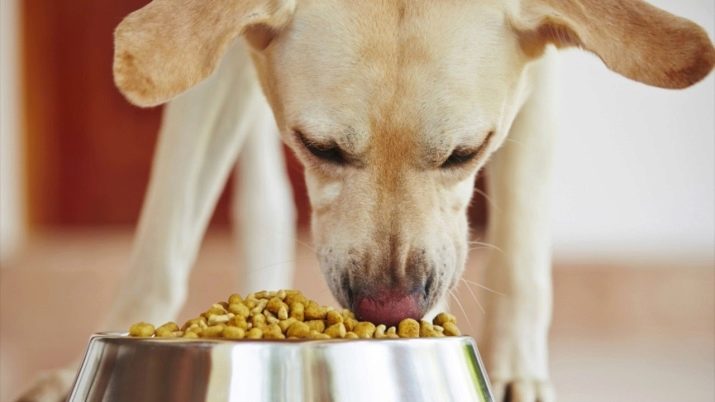
Puppy nutrition rules
A mother of a Labrador can feed babies up to 4 months old, and the best menu for them is mother's milk, which contains all the components they need to properly develop and form a strong immune system. But usually as pets, puppies are selected at about 2 months, and then the responsibility for the health of the "child" falls on the owner.
At this time, the digestive organs of the young animal continue to grow, and the dog needs a lot of energy to move, so the menu must be composed correctly.

When the puppy grows up, it must be provided with complementary foods. Usually they feed:
- calcined curd;
- natural yoghurt without extraneous additives
- finely chopped boiled poultry meat (turkey, chicken, mainly breast);
- a food product such as bifidoc, capable of stimulating the population of the microenvironment of the intestine of an animal with beneficial bacteria.
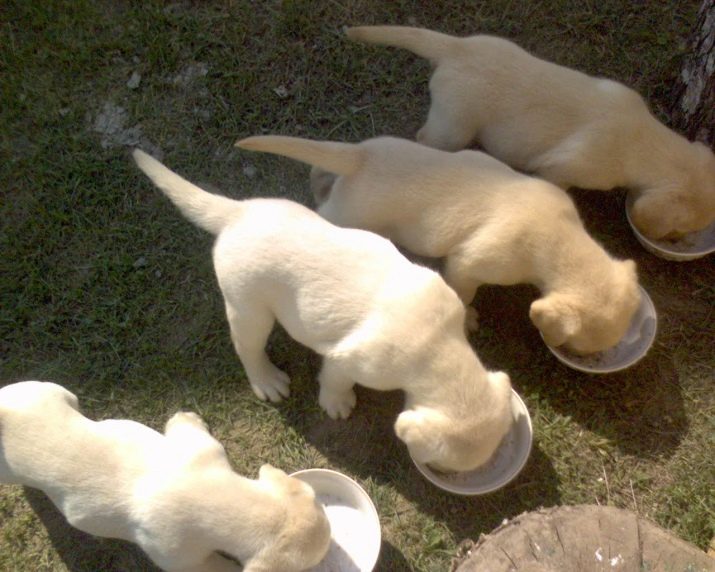
If the owner decided to make dry food the main food for the dog, then the baby can be given a little ready-made food in granules. At first, they are soaked in fermented milk drinks or yogurt, adding special pressed cottage cheese and vegetable oil (olive or flax) to the dish.
For small labrador puppies, a high content of protein and fat in food is important; for adolescents, a moderate level of these components is needed in the composition: protein in the amount of 24% and fat not higher than 14%.
You can start feeding after the Labrador is a month and 1 week old. You need to give food to the dog at the same hours. If the baby has not eaten everything, it means that he is not hungry, and the bowl can be removed after 15–20 minutes. It is important that there is always fresh water within reach.
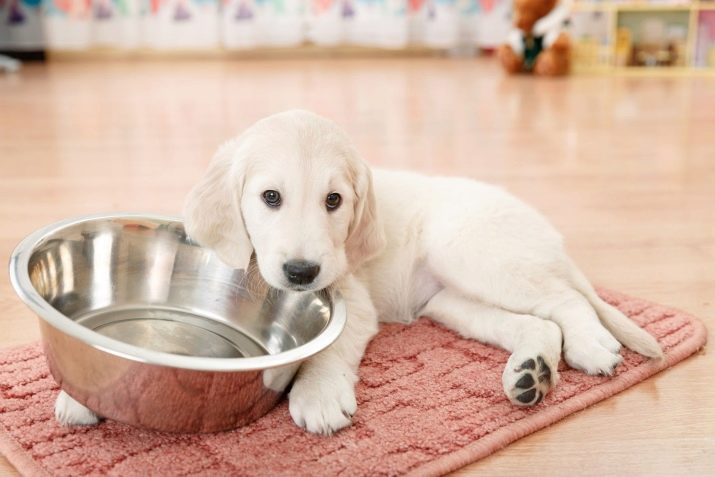
Diet for adult dogs
Officially, a Labrador is considered an adult from the age of 3, because until that time it continues to grow, its head and chest become more massive, the proportions of the dog's body and its psyche are formed. However, veterinarians recommend switching puppies to full adult nutrition at 10-18 months.
Since the animal's body is characterized by a slow metabolism, low-calorie, but nutritious food is selected for it, with the obligatory content of all the necessary elements and vitamins.
The dog is fed twice a day: early in the morning at 7-8 o'clock and in the evening (from 19 to 20 o'clock).Depending on body weight and health status, the pet should be given from 400 to 500 g of dry croquettes per day. At the same time, lactating and pregnant animals need an increased portion, and the elderly - a reduced portion.

In the next video, you will get acquainted with the menu of a Labrador puppy at the age of 2-4 months.






































